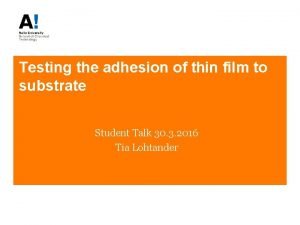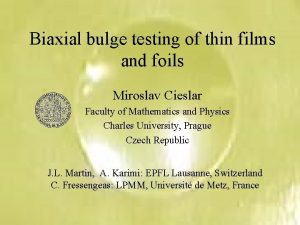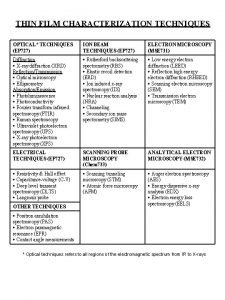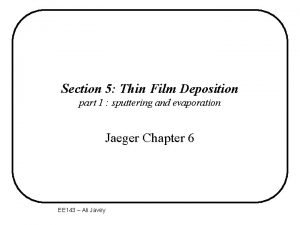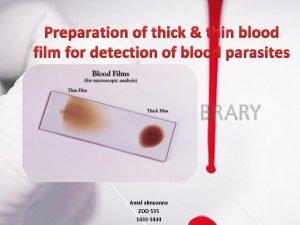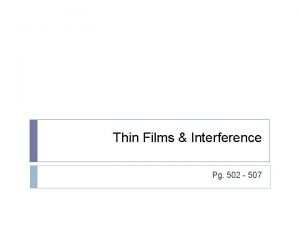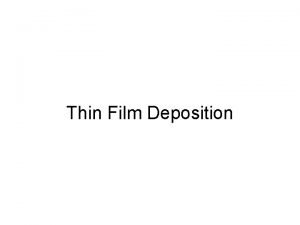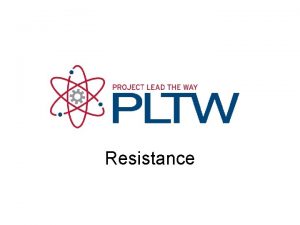Example Thin film resistance Thin films Introduction This







- Slides: 7

Example: Thin film resistance

Thin films Introduction • This model shows the approach that can be used in COMSOL Multiphysics in order to model very thin films in diffusion and conductions problems. • The example compares a high-fidelity model, where the physical extension of the film is taken into account, with a much less computationally demanding thin-film approximation. • The example makes use of COMSOL Multiphysics’ ability to activate and deactivate dependent variables in different subdomains.

This films – Problem definition Geometry and problem definition for the two cases High fidelity model Approximation • This example treats the conduction of a direct current through a metallic conductor. • The blue-colored layer is of a much poorer conductor. • The thin layer creates a large number of elements and nodes. • Analogous problems are found in diffusion and heat conduction models.

Thin film – Problem Definition Model Equations Main flow of current Implemented in the boundary conditions for both f 1 and f 2 Main flow of current

Thin films – Results Potential distribution, comparison High fidelity model Approximation

Thin films – Results Potential distribution, cross-section High fidelity model Approximation

Thin films Concluding remarks • The results from the high fidelity and the approximation are almost identical. • The computational time for the approximation is an order of magnitude smaller than that of th detailed model. • The modeling approach has been used for current conduction, diffusion, heat conduction, and porous media flow using Darcy’s law.

